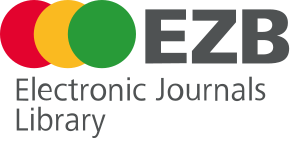Evidence of the usefulness of clinical simulation in building the profesionalcompetencies of medical students
DOI:
https://doi.org/10.56294/shp2025213Keywords:
graduate medical education, undergraduate medical education, simulation, translational science, Formative assesstmentAbstract
Background: Clinical simulation is a key tool for balancing the development of medical skills and patient safety. Following reports from the institute of medicine highlighting the need to prevent medical errors In the United States, an initiative that extended to global healthcare, simulation was implemented as a tool in medical training to bridge the theory - practice gap. The UAI reaffirmed this commitment to clinical simulation training, despite challenges in its implementation, to strengthen education and ensure the competence of future healthcare professionals. The aim of this study is to obtain feedback from UAI students who have received clinical simulation classes. Material and methods: (Complete here). Results: (Complete here). Conclusion: (Complete here). (Utilizar texto justificado).
References
1. Stefl M. To Err is Human: Building a Safer Health System in 1999. Front Health Serv Manag. 2001 Feb;18:1–2.
2. Simulación en Educación Médica [Internet]. [citado 2024 jun 3]. Disponible en: https://www.elsevier.es/es-revista-investigacion-educacion-medica-343-pdf-S2007505714727334
3. Ziv A, Ben-David S, Ziv M. Simulation based medical education: an opportunity to learn from errors. Med Teach. 2005 May;27(3):193–9.
4. Gutiérrez LH, Núñez AVB, Cárdenas CD, Cortés HEO, Gabriela A, Sánchez O, et al. La seguridad del paciente y la simulación clínica.
5. Institute of Medicine (US) Committee on Quality of Health Care in America. Crossing the Quality Chasm: A New Health System for the 21st Century [Internet]. Washington (DC): National Academies Press (US); 2001 [citado 2024 jun 3]. Disponible en: http://www.ncbi.nlm.nih.gov/books/NBK222274/
6. Ziv A, Wolpe PR, Small SD, Glick S. Simulation-Based Medical Education: An Ethical Imperative. Simul Healthc. 2006;1(4):252–6.
7. McGaghie WC, Issenberg SB, Petrusa ER, Scalese RJ. A critical review of simulation-based medical education research: 2003–2009. Med Educ. 2010 Jan;44(1):50–63.
8. Rudolph JW, Simon R, Raemer DB, Eppich WJ. Debriefing as Formative Assessment: Closing Performance Gaps in Medical Education. Acad Emerg Med. 2008 Nov;15(11):1010–6.
9. Fitch MT. Using high-fidelity emergency simulation with large groups of preclinical medical students in a basic science course. Med Teach. 2007 Mar;29(2–3):261–3.
10. Graber MA, Wyatt C, Kasparek L, Xu Y. Does simulator training for medical students change patient opinions and attitudes toward medical student procedures in the emergency department? Acad Emerg Med. 2005 Jul;12(7):635–9.
11. Waring MJ, Arrowsmith J, Leach AR, Leeson PD, Mandrell S, Owen RM, et al. An analysis of the attrition of drug candidates from four major pharmaceutical companies. Nat Rev Drug Discov. 2015 Jul;14(7):475–86.
12. Cook DA, Hamstra SJ, Brydges R, Zendejas B, Szostek JH, Wang AT, et al. Comparative effectiveness of instructional design features in simulation-based education: Systematic review and meta-analysis. Med Teach. 2013 Jan;35(1):e867–98.
13. McGaghie WC, Draycott TJ, Dunn WF, Lopez CM, Stefanidis D. Evaluating the Impact of Simulation on Translational Patient Outcomes. Simul Healthc. 2011 Aug;6(7):S42–7.
14. Issenberg SB, McGaghie WC, Petrusa ER, Gordon DL, Scalese RJ. Features and uses of high-fidelity medical simulations that lead to effective learning: a BEME systematic review. Med Teach. 2005 Jan;27(1):10–28.
15. Rosen MA, Hunt EA, Pronovost PJ, Federowicz MA, Weaver SJ. In Situ Simulation in Continuing Education for the Health Care Professions: A Systematic Review. J Contin Educ Health Prof. 2012;32(4):243–54.
16. McGaghie WC, Issenberg SB, Petrusa ER, Scalese RJ. Revisiting ‘A critical review of simulation-based medical education research: 2003-2009’. Med Educ. 2016 Oct;50(10):986–91.
17. Okuda Y, Bryson EO, DeMaria S, Jacobson L, Quinones J, Shen B, et al. The Utility of Simulation in Medical Education: What Is the Evidence? Mt Sinai J Med. 2009 Aug;76(4):330–43.
18. Norman G, Dore K, Grierson L. The minimal relationship between simulation fidelity and transfer of learning. Med Educ. 2012 Jul;46(7):636–47.
19. Kneebone RL, Scott W, Darzi A, Horrocks M. Simulation and clinical practice: strengthening the relationship. Med Educ. 2004 Oct;38(10):1095–102.
20. Roizen MF. Technology-enhanced simulation for health professions education: a systematic review and meta-analysis. Yearb Anesthesiol Pain Manag. 2012 Jan;2012:414–5.
21. Riancho J, Maestre JM, del Moral I, Riancho JA. Simulación clínica de alto realismo: una experiencia en el pregrado. Educ Med. 2012 Jun;15(2):109–15.
22. Hunt EA, Shilkofski NA, Stavroudis TA, Nelson KL. Simulation: Translation to Improved Team Performance. Anesthesiol Clin. 2007 Jun 1;25(2):301–19.
23. Allan CK, Thiagarajan RR, Beke D, Imprescia A, Kappus LJ, Garden A, et al. Simulation-based training delivered directly to the pediatric cardiac intensive care unit engenders preparedness, comfort, and decreased anxiety among multidisciplinary resuscitation teams. J Thorac Cardiovasc Surg. 2010 Sep;140(3):646–52.
24. Britt RC, Reed SF, Britt LD. Central Line Simulation: A New Training Algorithm. Am Surg. 2007 Jul 1;73(7):680–2.
25. Grudziak J, Herndon B, Dancel RD, Arora H, Tignanelli CJ, Phillips MR, et al. Standardized, Interdepartmental, Simulation-Based Central Line Insertion Course Closes an Educational Gap and Improves Intern Comfort with the Procedure. Am Surg. 2017 Jun 1;83(6):536–40.
Published
Issue
Section
License
Copyright (c) 2025 D'arcy Walter Palacios Baldoceda (Author)

This work is licensed under a Creative Commons Attribution 4.0 International License.
The article is distributed under the Creative Commons Attribution 4.0 License. Unless otherwise stated, associated published material is distributed under the same licence.






